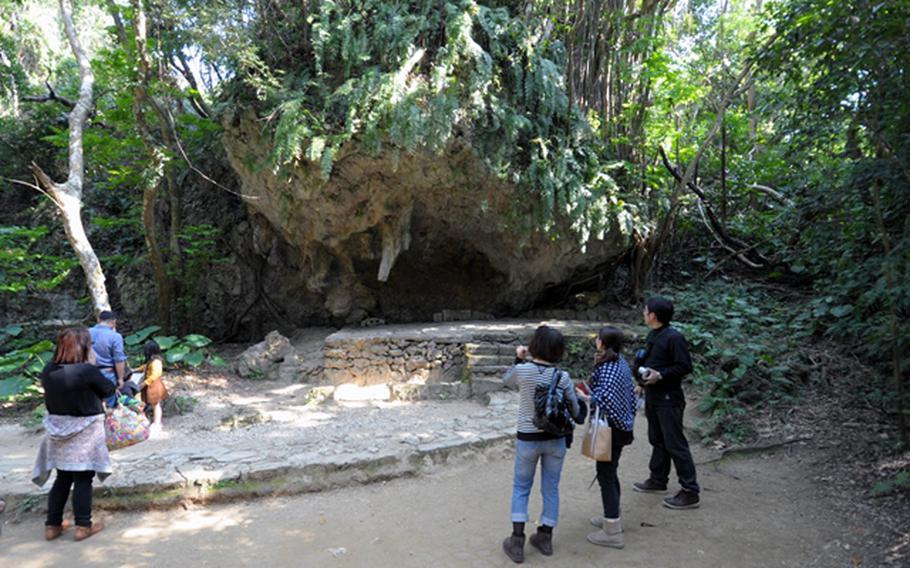Community News
Explore Okinawa’s sacred Sefa-Utaki site
Kadena Air Base October 6, 2018

()
KADENA AIR BASE - During a recent off-base adventure, I decided to visit Sefa-Utaki, one of Okinawa's most significant religious sites.
It sits on the side of a heavily forested hill in Nanjo, on the Chinen Peninsula's east coast, and dates back to the Ryukyu Kingdom in the 15th century. For more than 400 years, only the royal family priestesses were allowed to make the steep climb to pray under stunning natural rock formations during religious pilgrimages.
While it's a popular tourist destination now, with a parking lot, gift shops and restaurants lining the small road to an exhibition hall and entrance, it's still a place of worship. Visitors are reminded not to interrupt those who are there to show their respect and pray.
I paid my 200 yen entry fee, about $1.70 at today's exchange rate, and watched a quick video with English subtitles. In addition to giving me some historical background, the video warned me that the pathway to the top was built from uneven and rough rocks. If you're going to go, I would recommend that you ditch the sandals and high-heel shoes in favor of more comfortable footwear.
After the first few minutes of climbing, I came to the original entrance to the site, with an outstanding view out over the crystal blue waters of the Pacific Ocean. I had to chuckle as my wife and daughters raced ahead of me. As a man, this is as far as I would have been allowed if I had visited hundreds of years ago.
I pushed ahead and slowly made my way up, enjoying the solitude and bright rays of sun shining down through the thick foliage. Massive trees sent gigantic root systems crawling down the cliffs, and people paused in prayer in front of the altars.
Small groups gathered around tour guides for a complete explanation of various spots, but I relied solely on the English translations on the plaques, including the one that warned of the poisonous "habu" snakes.
At one spot, two jugs were positioned under drooping stalactites to catch dripping water. That "holy water" was used in traditional ceremonies and New Year's Day rituals.
I finally made it to what's called, "Sangui," a triangular tunnel formed by two gigantic rock formations. On the day I visited, the wind howled through the space, lending to the solemn and spiritual feeling.
On the far side of the tunnel I found a great view of Kudaka, or "Island of the Gods." Located just three miles off of the jagged and rocky coastline, it was believed to be where the founder of the Ryukyu people - Amamikiyo - first descended from the heavens.
If you decide to visit Sefa-Utaki - which I would highly recommend - make sure to grab an English-language brochure to help you navigate your visit.
Sefa-Utaki is open from 9 a.m. to 6 p.m. daily, but you must enter by 5:30 p.m. It is closed every May 29-31, November 3-5 and November 22-24. Admission fees are: 200 yen for high school students and older; 100 yen for elementary and junior high school students.
Getting there:
270-1 Chinen-kudeken Nanjo City OkinawaExit Gate 2 and drive straight for about 3.5 kilometers (you'll pass the Okinawa City Hall and the turn-off for the Okinawa City Zoo, or Kodomo No Kuni)At Route 329, turn right and travel 17 kilometersAt Rouge 331, turn left and travel 13 kilometersThe parking lot and ticket sales are on the left side of the road